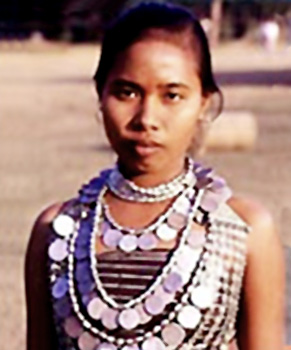 Demography of Pakur District mainly includes tribal population. Santhal tribe is the single largest section of the population though they are not uniformly spread in the district. Besides the Santhals, another important tribal group of Pakur District is Sauria Paharia Tribe. However, very little is known about the primitive tribe of this district. In 2011, Pakur had population of 899,200 of which male and female were 453,101 and 446,099 respectively. According to the Population Census in the year 2011, Pakur District had population of 899,200 of which male and female were 453,101 and 446,099 respectively. The population of Pakur District constituted 2.73 percent of total population of Jharkhand. There was a drastic change of 28.15 percent in the population compared to population as per 2001. The population density of Pakur district for 2011 is 498 people per sq. km. The average literacy rate of Pakur was 50.17 compared to 30.65 of 2001. If things are looked out at gender wise, male and female literacy were 59.02 and 41.23 respectively. The total literate in Pakur District were 363,153 of which male and female were 214,763 and 148,412 respectively. In 2001, Pakur District had 170,931 in its district. Accoding to the Sex Ratio in Pakur District, it stood that there are 985 males per 1000 male compared to 2001 census figure of 957. The average national sex ratio in India is 940. In 2011 Population Census, the child sex ratio is 965 girls per 1000 boys.
Demography of Pakur District mainly includes tribal population. Santhal tribe is the single largest section of the population though they are not uniformly spread in the district. Besides the Santhals, another important tribal group of Pakur District is Sauria Paharia Tribe. However, very little is known about the primitive tribe of this district. In 2011, Pakur had population of 899,200 of which male and female were 453,101 and 446,099 respectively. According to the Population Census in the year 2011, Pakur District had population of 899,200 of which male and female were 453,101 and 446,099 respectively. The population of Pakur District constituted 2.73 percent of total population of Jharkhand. There was a drastic change of 28.15 percent in the population compared to population as per 2001. The population density of Pakur district for 2011 is 498 people per sq. km. The average literacy rate of Pakur was 50.17 compared to 30.65 of 2001. If things are looked out at gender wise, male and female literacy were 59.02 and 41.23 respectively. The total literate in Pakur District were 363,153 of which male and female were 214,763 and 148,412 respectively. In 2001, Pakur District had 170,931 in its district. Accoding to the Sex Ratio in Pakur District, it stood that there are 985 males per 1000 male compared to 2001 census figure of 957. The average national sex ratio in India is 940. In 2011 Population Census, the child sex ratio is 965 girls per 1000 boys.
The Santhals are relatively progressive and they practice settled cultivation. They live in close knit communities and maintain traditional leadership pattern. With the introduction of modern political system non-traditional leadership pattern has also emerged. The Santhals are hard working people and migrate in off season to West Bengal and even to Assam. Even though they are settled cultivators their cultivation practices have not improved over time and there is no noticeable impact of modern agricultural technology in the area. Though the Santhal society is patriarchal but women play a very important role for the social fabrication. The Paharia Tribe lives mainly on the hills away from the Santhals and is inaccessible to the administration. Very little is known about Paharias from authentic sources. No comprehensive study like Santhals has been made on them. The hill Paharias practice settled cultivation methods and supplement their income by collecting minor forest produces. Unfortunately, poverty in its ugliest form can be seen in Paharia villages.
Marriage is the principal institution of the society in Pakur District. Marriage system among the Santhals and Paharias is guided by their customary norms. The tribal society is accustomed with all sorts of marriages such as monogamy, bigamy, polygamy, polyandry, widow remarriage, etc. The Santhals like other tribes look upon marriage such as natural necessity. Divorce is not unknown in tribal society. Their food habits are completely different from the plainsmen. The main languages used in the district are Santhali language, Hindi language and Bengali language. This district of Jharkhand is presenting a picture of mixed heterogeneous society with different languages, cultures and heritages.



















